🎮 Violet Wisteria
2023年 2月 19日
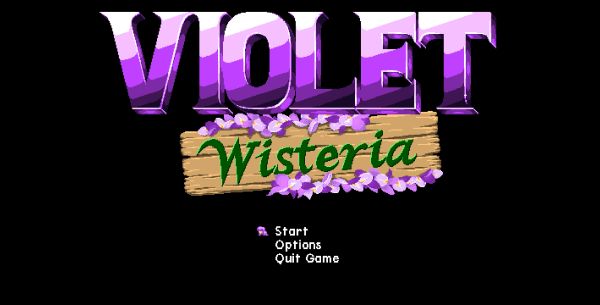
Indie games are rife with people who proudly display their love of retro games on their sleeve. And fans of indie games tend to treat retro games as a kind of art style, never as old or outdated. This is the result of developers both old and new putting all their passion into their work, with “modern retro” games continuing to push at the limits of the art style.
What makes a game feel “retro” is not just about having pixel art or chiptune sound effects. Having a high level of difficulty is an important element to making your game feel truly old-school. It can take a lot of courage on the part of the developer to create highly difficult games; there is always the worry that it will turn off players who are not used to the punishing titles of older systems. But it can also be satisfying to encounter a tough game that players must confront head-on. It is at this point that I would like to introduce one such game that offers a retro-flavored challenge: Violet Wisteria.
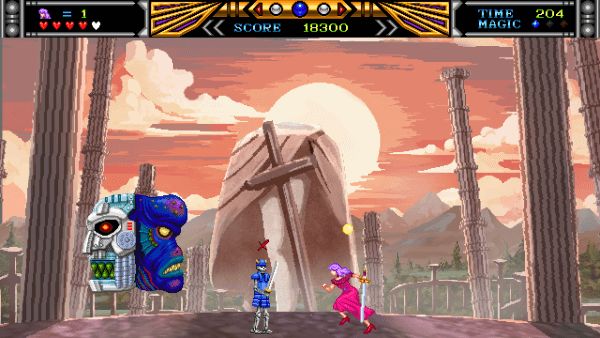
Violet Wisteria is a tough old-school game that doesn't pull its punches.
Violet Wisteria is a 2D side-scrolling action game filled with tough enemies to defeat. The plot is familiar and simple, following the story of a queen named Wisteria who boldly confronts the evil that lurks around her in order to protect her country from an enemy invasion. However, the enemies that she encounters cannot simply be defeated by swinging her sword around.
Wisteria can use red, blue, and white sword attacks by holding down different directions on the D-pad while swinging. Red attacks defeat blue enemies, blue attacks defeat white enemies, and white attacks defeat red enemies. And if you use an attack that is the same color as the enemy, you will be knocked backwards through the air. This allows you to cross chasms and quickly escape out of range of enemies. Mastering this unique rock-paper-scissors color system is required to take down the many enemies you encounter and traverse the levels.
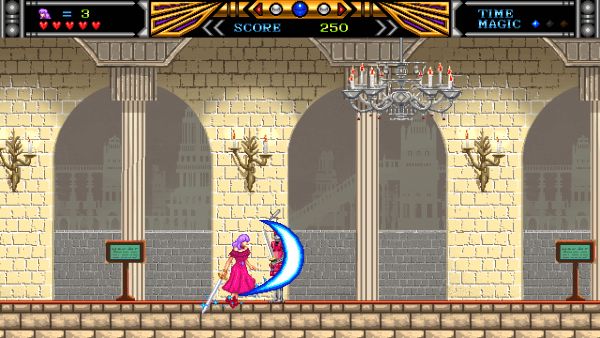
Mastering the game's red-white-blue attack patterns is key to victory.
There is a tutorial that explains all of this quite well, and you can turn on an option to display which color you need to use on an enemy to defeat them. Although it is an easy system to understand, it takes a while for the player to internalize it enough to automatically respond in the game itself. Mastering this system is part of the charm of this game, as you will likely bark out, “Red! White! Blue!” while playing.
The movement and controls are quite comfortable, and it’s easy to see at a glance if an enemy is within range of your attacks. The height of your jump is equal to Wisteria’s standing height, so it’s easy to get a feel for the platforming as well. By making these aspects immediately understandable to the player, even when the levels and enemies ramp up in difficulty, it always feels as if failure is your own fault. It tickled the part of my brain that does not want to back down from a good challenge.
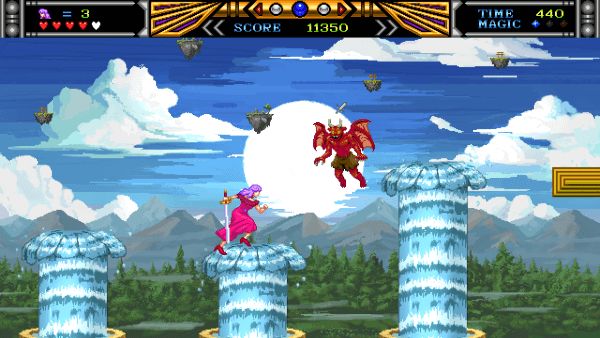
On top of the enemies and attack system, the levels boast a variety of platforming challenges.
The visuals and music are beautiful, and they make the game feel like a familiar classic and thus very approachable. Familiarity is a very important factor for difficult games, as it can take you back to the olden days when your friends would watch and cheer you on.
The difficulty of Violet Wisteria is not limited to the rock-paper-scissors system. The distance between the platforms and the placement of the enemies are tricky, and can be demanding for first-time players. And the limited continues with little checkpointing can give some players pause.
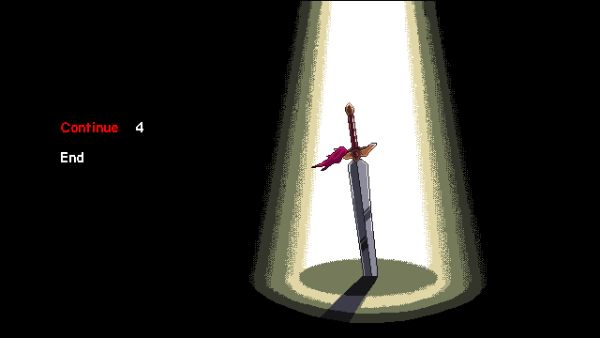
Get used to seeing this screen a lot.
But that just makes it sound even more like a game that I played long ago in my childhood. What could be more retro than that? And let’s say you get a game over and have to start from the beginning. You will notice that your muscle memory kicks in and you are able to get a little further and take less damage than before.
Because there is such a limited amount of life and continues, players must refine their play through practicing these levels over and over. There is no other way around it. This sensation of training and growth is what retro games are all about.
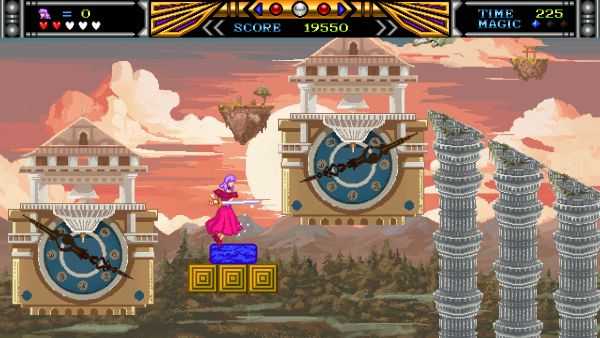
Violet Wisteria has gorgeous pixel art that pushes you through the difficult levels to see what the next screen has in store.
Although I keep calling this “retro,” Violet Wisteria is no mere retread of the classics, and is indeed a modern game that offers new challenges and experiences to players. And, shockingly enough, Violet Wisteria is KaniPro Games’ first released title. Their history with and love for games is obvious, so we can expect great things in their future works.
If you have the chance, you should definitely check out Violet Wisteria. It may remind you of the days when you used to get together with friends and announce, “Today is the day we clear this game.”
